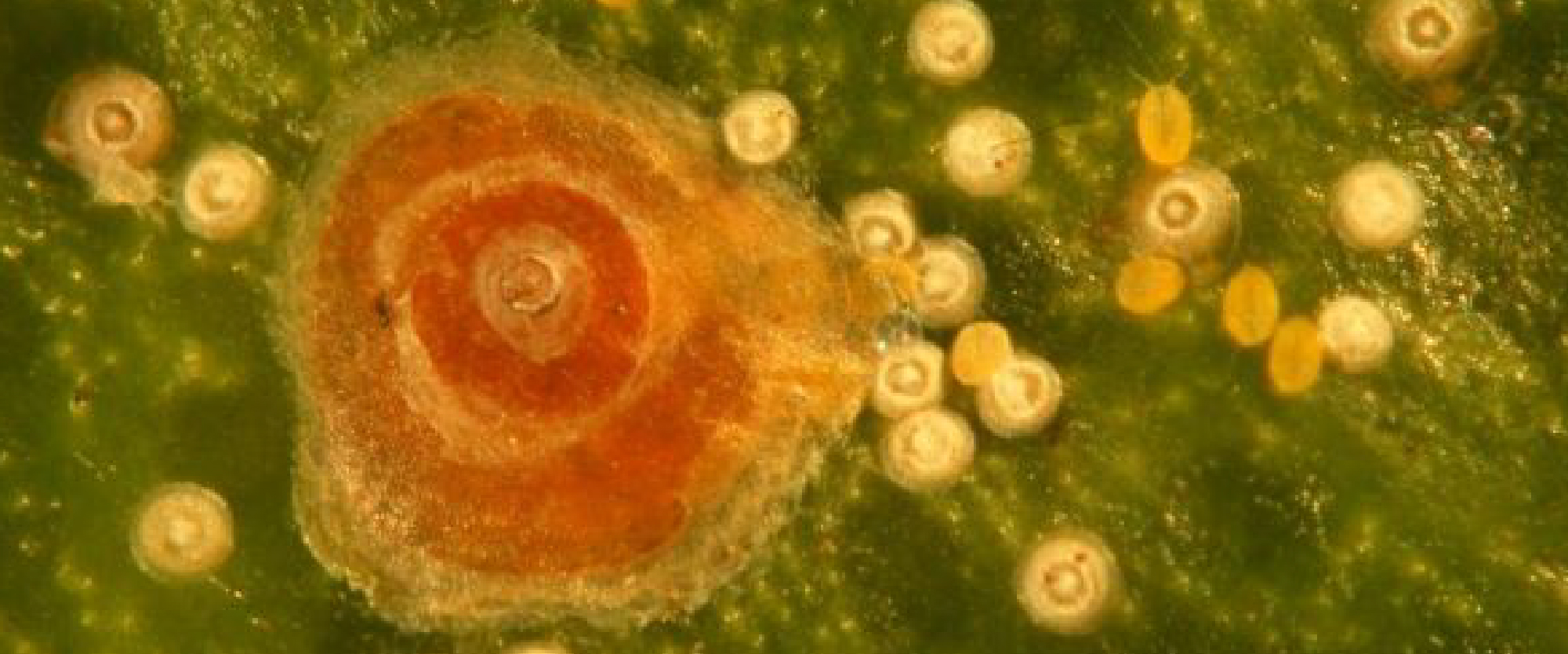Oriental yellow scale (Aonidiella orientalis) gets it’s name from the color which is almost white pale brown or yellow. The Oriental yellow scale attaches itself to a host plant, loses its legs and remains stationary, covered by a scale-like shield. Males and females are visually dimorphic during development; females have a round scale covering them and males have an elongated scale under which they grow. Females lay eggs beneath the waxy shield or they may also give live birth to around crawlers. The crawlers are then dispersed by wind, birds, mammals or farm workers picking fruit. The crawlers find a suitable spot, settle and start feeding. Highly polyphagous, it can be an exonomic pest of crops from diverse families such as citrus, ficus, mango, papaya, bananas, palm trees and tea.
DAMAGE
The oriental yellow scale damages the plant by sucking the sap, thus weakening it. Some of the signs of oriental yellow scale damage are: leaf and fruit deformation and discoloration, reducing their market value. Heavy infestations can kill the plants, even well established trees. In severe instances, fruit might be damaged to the point where it is not marketable. Severe leaf and wood infestation of oriental yellow scale causes defoliation of portions of the tree and may kill all or parts of the branches.
There are specific natural enemies for the oriental yellow scale.
For more information contact your local BioBee field agent.














